 CHEYENNE, Wyo.-Run for your lives ... Yellowstone's going to explode!Hundreds of small earthquakes at Yellowstone National Park in recent weeks have been an unsettling reminder for some people that underneath the park's famous geysers and majestic scenery lurks one of the world's biggest volcanoes.In the ancient past, the volcano has erupted 1,000 times more powerfully than the 1980 blast at Mount St. Helens, hurling ash as far away as Louisiana. No eruption that big has occurred while humans have walked the earth, however, and geologists say even a minor lava flow is extremely unlikely any time soon.Some observers are nonetheless warning of imminent catastrophe."To those of us who have been following these events, we know that something is brewing, especially considering that Yellowstone is over 40,000 years overdue for a major eruption," warned a posting on the online disaster forum: http://www.armageddononline.org./
CHEYENNE, Wyo.-Run for your lives ... Yellowstone's going to explode!Hundreds of small earthquakes at Yellowstone National Park in recent weeks have been an unsettling reminder for some people that underneath the park's famous geysers and majestic scenery lurks one of the world's biggest volcanoes.In the ancient past, the volcano has erupted 1,000 times more powerfully than the 1980 blast at Mount St. Helens, hurling ash as far away as Louisiana. No eruption that big has occurred while humans have walked the earth, however, and geologists say even a minor lava flow is extremely unlikely any time soon.Some observers are nonetheless warning of imminent catastrophe."To those of us who have been following these events, we know that something is brewing, especially considering that Yellowstone is over 40,000 years overdue for a major eruption," warned a posting on the online disaster forum: http://www.armageddononline.org./Another Web site contained a page entitled "Yellowstone Warning" that encouraged "everyone to leave Yellowstone National Park for 100 miles around the volcano caldera because of the danger in poisonous gasses that can escape from the hundreds of recent earthquakes. "That site, which carried the U.S. Geological Survey logo, has since been taken down."A casual observer would be led to believe that was an official source," park geologist Hank Heasler said, pointing out that the Yellowstone Volcano Observatory, which monitors the park for seismic activity, hasn't changed the volcano's alert level from "normal."Working with the Geological Survey, Yellowstone spokesman Al Nash issued a press release Thursday saying no evacuation had been ordered.Jessica Robertson, a Geological Survey spokeswoman in Reston, Va., said the Web page violated the USGS trademark and that the agency's attorneys were investigating whether a federal offense was committed. Phone and e-mail messages left with the contact named on the Web site weren't returned Thursday.Earthquakes are hardly unusual in Yellowstone. Hundreds occur in the park every year. Earthquake "swarms" like the recent activity also aren't uncommon, although the 900 or so quakes that began Dec. 26 and significantly tapered off about a week later appear to have been the most energetic swarm in more than 20 years.The most powerful temblor was magnitude 3.9, just short of being able to cause moderate damage. The vast majority of quakes were too weak to be felt by people.Scientists knowledgeable about Yellowstone's geology aren't publicly speculating about what caused the swarm before they can analyze data. That will take months."I could come up with 100 different theories without any evidence for them and they would all be equally likely," said Jake Lowenstern, the Menlo Park, Calif.-based scientist in charge of Yellowstone Volcano Observatory. "Unless you have some reason to say that's what's going on, then you're not going to get a whole lot of people convinced by your speculation."Heasler said the odds of a cataclysmic eruption at Yellowstone any time soon are astonishingly remote - about the same as a large meteorite hitting the Earth. The last such eruption occurred 640,000 years ago. The last eruption of any kind at Yellowstone was a much smaller lava flow about 70,000 years ago."Statistically, it would be surprising to see an eruption the next hundred years," Lowenstern said.Much more likely, he said, would be a hydrothermal explosion in which underground water encounters a hot spot and blasts through the surface. Small hydrothermal explosions producing craters a few feet wide occur in Yellowstone perhaps once or twice a year. Large hydrothermal explosions leaving craters the size of a football field occur every 200 years or so, according to a 2007 paper co-authored by Heasler, Lowenstern and others.Lowenstern said new equipment installed deep within bore holes in the park over the past two summers eventually should provide a clear picture of what's causing the earthquake swarm. That data could help scientists make better predictions about Yellowstone's geology.
By MEAD GRUVER
On the Net:
U.S. Geological Survey: http://www.usgs.gov/
Yellowstone Volcano Observatory: http://volcanoes.usgs.gov/yvo/
By MEAD GRUVER
On the Net:
U.S. Geological Survey: http://www.usgs.gov/
Yellowstone Volcano Observatory: http://volcanoes.usgs.gov/yvo/
As in the days of Noah....

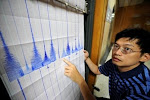
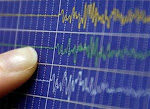
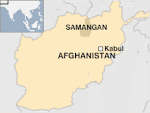







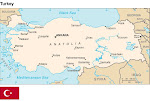
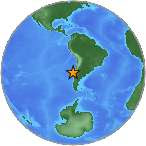




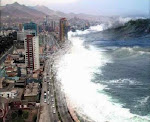

.jpg)


.bmp)
No comments:
Post a Comment